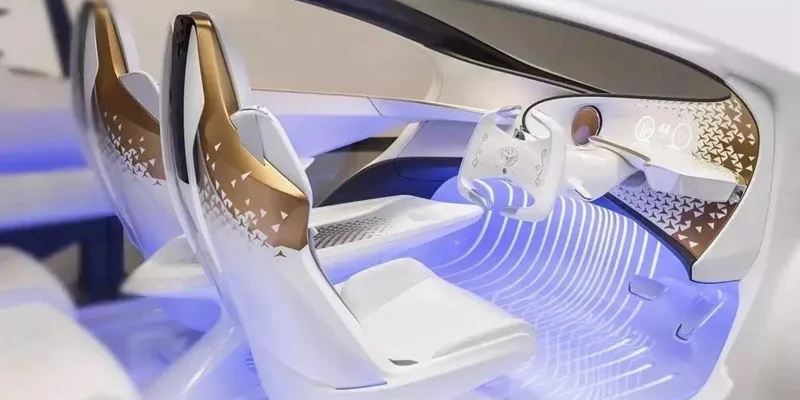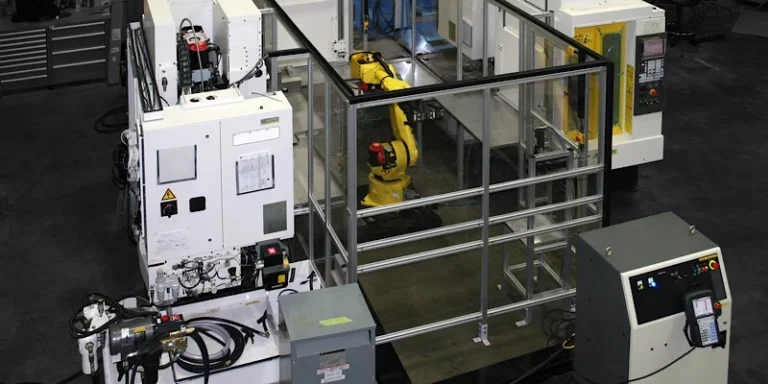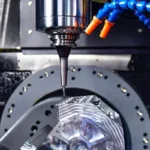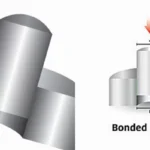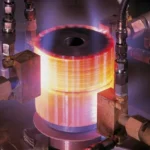The automotive lighting system can undoubtedly be considered the eyes of a car.
The demand for the appearance of automobile headlights is high, with several key components including transparent parts and electroplated parts. Therefore, headlights can be regarded as the most crucial parts of a car’s exterior, necessitating extremely high craftsmanship in the design and manufacture of automotive molds.
The main lamps in a car, serving as the primary headlights, vary in configuration depending on the vehicle and even within the same system. The primary components that constitute a car’s headlights include right and left lenses, right and left decorative frames, right and left lamp housings, and right and left reflectors.
OLED is a New Trend in Automobile Interior Lighting
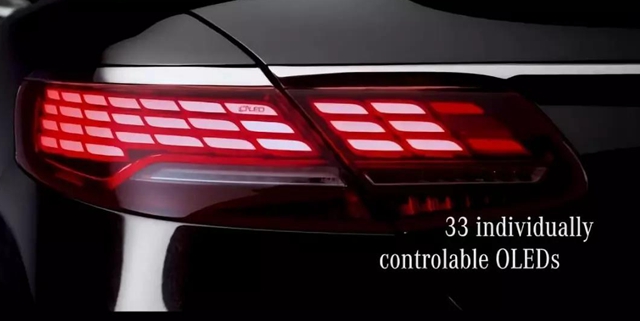
Interior ambient lighting in cars serves a decorative purpose, enhancing the atmosphere of the vehicle’s interior. Currently, multicolor ambient lighting is widely used, allowing car owners to freely choose the light color and brightness according to their preferences, thus providing a better driving experience.
With continuous technological advancements, new innovations are constantly being introduced into our lives. In recent years, a new technology has emerged in the field of automotive lighting: OLED (Organic Light-Emitting Diode).
Most people became familiar with OLED technology during the launch of the iPhone X last year, which featured a full-screen OLED display. This display is known for its self-illuminating properties, high contrast, lightweight design, low afterglow, and low power consumption. However, OLED technology is not limited to display screens; it is also used in lighting.
Unlike other light sources, OLED lighting is a type of surface light source that utilizes organic materials to produce light. It has low energy consumption, low heat generation, and is environmentally friendly. It emits soft, low blue light similar to natural light. Additionally, OLED panels are thinner and lighter, enabling transparent and flexible functions, which greatly enhance design freedom and allow for patterned lighting.
OLED lighting technology is actively being integrated into traditional lighting, medical care, and other fields. It has already been used in the taillights of BMW, Audi, and other car models, and is expected to be applied to interior lighting in cars in the future.
The main advantage of using OLED lighting panels for interior lighting is space-saving. Unlike LED lights and halogen bulbs, which cannot be embedded within the car’s structure, OLED panels can be easily integrated. Given the limited space inside a car, the thin and lightweight OLED panels make efficient use of the available space. This technology has a promising future, with potential applications not only in cars but also in aircraft and ships.
What Is The Car Interior Ambient Light?
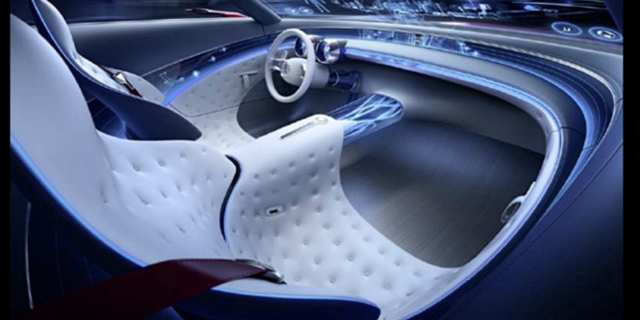
In-vehicle lighting, including car atmosphere lights, serves both decorative and indicative purposes. The interior atmosphere lamp is a type of flexible high-brightness, astigmatism optical fiber LED light, falling under decorative lighting. Common colors like red, blue, and green create a warm and enchanting indoor atmosphere, enhancing the car’s aesthetic appeal. Importantly, the color of these lights does not interfere with safe driving.
Car interiors feature three main types of lighting: functional lighting, background lighting, and ambient lighting. Ambient lighting, commonly referred to as car atmosphere lights, includes welcome atmosphere lights, HMI products’ ambient atmosphere lights, linear decorative atmosphere lights, and color-changing RGB atmosphere lights.
The typical installation positions for car atmosphere lights include the footwell, center console, door armrests, and the bottom of the vehicle.
Why Do Cars Have Interior Ambient Lights?
- Functionality: Interior ambient lights enhance night travel safety by improving visibility and reducing eye strain, helping drivers see the interior controls and passengers more clearly.
- Comfort: These lights contribute to a comfortable and stylish environment, making the car feel as warm and inviting as home or office.
- Design: Ambient lighting can elevate car brand recognition by highlighting unique design elements and enhancing the overall aesthetic appeal.
- Luxury: They add a touch of luxury and sportiness to the car interior, creating a more sophisticated and high-end atmosphere.
- Personalization: Ambient lights offer intelligent and interactive features, allowing drivers to customize the lighting to match their mood or preferences, adding a personal touch to the driving experience.
- Technology: Ambient lights contribute to a more three-dimensional and visually expansive interior, showcasing advanced technology and modern design elements.
What’s The Most Important Component Of The Lights?
The luminous part of automobile ambient lamp product can be divided into light source and light guide. Today we will talk about the light guide part of the light guide bar.
1.Principle of the ambient lightguide
Total reflection occurs when light passes through a circular or other transparent material of a specific shape. What if we destroy the complete reflectance and allow the light to flow from the transparent material surface, the utilization of principle of optics in the automotive field is called the light guide.
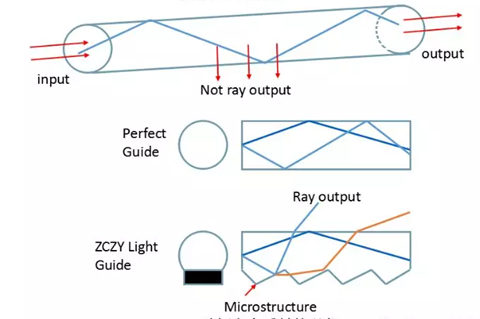
2.LED guide light mold sample
LED light bar is a new type of energy-saving light source based on the combination of optical design and precision machining. The beautiful appearance and even luminous applied to the headlamps and rear lamps enjoys great popularity from car owners.
MOLD INFOMATION
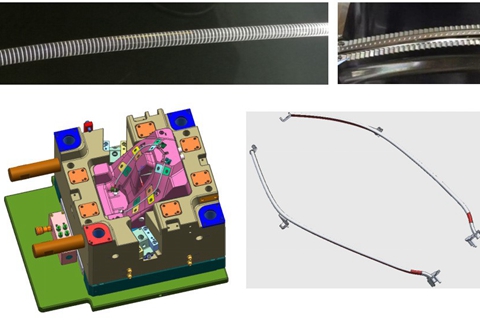
Material: PMMA (polymethyl methacrylate) can be regarded as the most excellent transparent polymer materials in market now. The refractive index is 1.49 and the visible light transmittance is as high as 92%.
Key point of machining: 5-axis CNC machining is able to decrease the clamping times and finish the whole machining in one time and ensure the best accuracy. Due to the high reflective demand, the mold must be high speed machining to achieve Ra0.2um. Tooth is high reflective demand which requires the angle to brass accurate and keep sharp, and the surfaces must be free of cutting marks.
Key point of test: procedural test lighting test after tool trail.
LIGHTING TEST
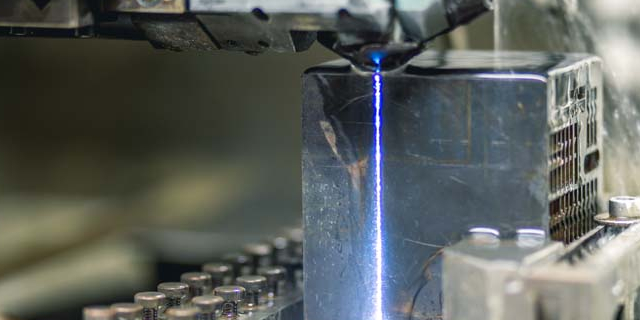
3.Automotive lighting prototypes
Professional rapid prototyping companies are typically the quickest to grasp designers’ needs for automotive prototypes before production. The light guide’s appearance is highly aesthetic, featuring uniform light performance achieved through precision machining. This crucial requirement presents significant challenges for parts manufacturers. The complex structure of optical design entails numerous tiny microstructures that necessitate high-precision 5-axis CNC machining.

